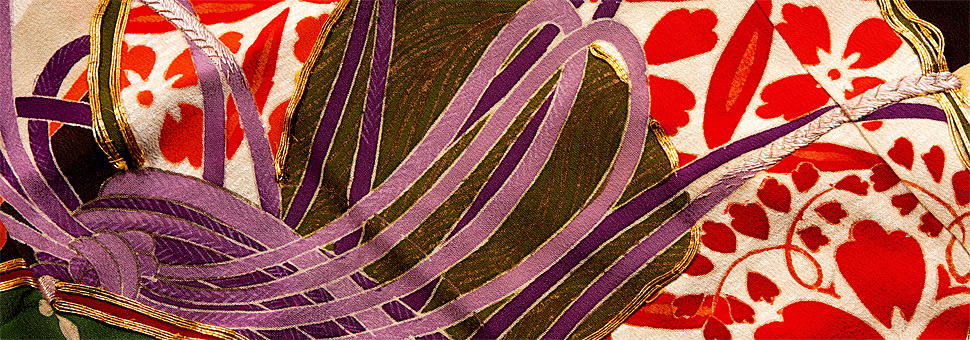by Erica Prus, Central St Martins, University of the Arts, London
After studying a fashion BA for three years (I’m now in my final year), I would have expected to have a firm understanding of textiles by now: how they’re made, the infinite technologies behind their creation and the complex histories behind each woven and non-woven cloth. I decided to take the Intensive Textile Course (November 2021) taught by Gillian Vogelsang-Eastwood at the Textile Research Centre (TRC) in Leiden and found out that my assumptions were completely wrong.
 A medieval cotton textile produced in India for the Egyptian market. Qusair al-Qadim, Red Sea coast, Egypt, 14th century (TRC 2020.0239).I’ve been interested in archaeology and material culture for as long as I can remember. As a child, I would spend weekends in my father’s archive in London, where he collected and stored vernacular objects from different times and places. It was like magic to my child self and that feeling of awe when I’m in an archive environment and able to connect quietly with tangible historical objects has never left me. I’m not sure when, but sometime during my degree in fashion I decided I wanted to turn this curiosity into something more defining, somehow combining it with my degree and my interest in textiles, which led me to the TRC.
A medieval cotton textile produced in India for the Egyptian market. Qusair al-Qadim, Red Sea coast, Egypt, 14th century (TRC 2020.0239).I’ve been interested in archaeology and material culture for as long as I can remember. As a child, I would spend weekends in my father’s archive in London, where he collected and stored vernacular objects from different times and places. It was like magic to my child self and that feeling of awe when I’m in an archive environment and able to connect quietly with tangible historical objects has never left me. I’m not sure when, but sometime during my degree in fashion I decided I wanted to turn this curiosity into something more defining, somehow combining it with my degree and my interest in textiles, which led me to the TRC.
The Intensive Textiles Course was five days long and each day we focused on the compositional technologies that make up textiles. The concept of the course was to learn a skill each day in order to not actually make but conceptually create a full garment to wear on the Saturday after the course had finished, which was a clever way of deconstructing the complex processes that it takes to create any textile. We were not actually producing garments but rather intimately studying what makes them, whilst constantly testing and questioning the function of textiles, and seeing them not only as parts of garments, but rather as a whole universe of woven anthropologies.
We were supposed to study Spinning, Dyeing, Weaving, Velvet making and Printing chronologically and all in great depth. Chronologically though we didn’t, the depth was certainly there, we leapt from microscopic analysis of fibre to a lesson on mordants and the rainbow of pre-modern dyes in the space of a day, and all in the healthy intensity the course promised. Gillian would often let us stay beyond the finishing time listening to her encyclopaedic brain (she’s written several encyclopaedias!). She kindly shared every ounce of knowledge that she possibly could and answered all our questions with patience and undoubtable certainty. She would also facilitate tactile engagement with the textiles, carefully removing modern and premodern pieces from boxes for us to feel and would allow us to cautiously gaze upon the more ancient pieces - all from her vast and impressive archive.
 Fragments of a linen textile from Çatal Hüyük, Turkey, c. 5000 BC (TRC 2000.0018).Gillian listened to what each of us were excited by and took the time to learn what our individual interests were. When somebody enquired about a particular part of textile history, she would enthusiastically present the history physically before us; she tailored our time together as a group into our own unique learning experience. We were allowed to examine numerous textiles from the TRC archive, including but not limited to a 7,000-year-old textile fragment from Çatal Hüyük in Turkey, a vast velvet collection spanning from the medieval up until the 19th century, intricate Japanese shibori dyed by tying rice ‘korrels’ (Gillian forgot the English word, and without realising used the Dutch word for a grain of rice!) to the material, an assortment of 20th century American printed ‘feed sack’ fabrics, and Indian textiles from medieval Egypt that Gillian collected over the years. It was intimate and personal.
Fragments of a linen textile from Çatal Hüyük, Turkey, c. 5000 BC (TRC 2000.0018).Gillian listened to what each of us were excited by and took the time to learn what our individual interests were. When somebody enquired about a particular part of textile history, she would enthusiastically present the history physically before us; she tailored our time together as a group into our own unique learning experience. We were allowed to examine numerous textiles from the TRC archive, including but not limited to a 7,000-year-old textile fragment from Çatal Hüyük in Turkey, a vast velvet collection spanning from the medieval up until the 19th century, intricate Japanese shibori dyed by tying rice ‘korrels’ (Gillian forgot the English word, and without realising used the Dutch word for a grain of rice!) to the material, an assortment of 20th century American printed ‘feed sack’ fabrics, and Indian textiles from medieval Egypt that Gillian collected over the years. It was intimate and personal.
Gillian is a textile anarchist. The whole course had a sense of demolishing the theoretical constraints imposed by academia. Much of the literature on textile archaeology uses confusing diagrams and complex jargon as means of communication; contrastingly, Gillian’s vision is a fusing of the practical and theoretical. We were constantly learning through our hands, creating samples and experimenting with textile technologies. Gillian would accompany these sessions with short seminars to explain the theory. With the tactile physicality of this type of learning, you can really start to understand how these technologies work. They no longer feel like unintelligible lines of ink on a page - this is the core of Gillian’s mantra.
During the course, I constantly questioned the things I thought I knew about textiles; every day we would be guided in annihilating the preconceptions of the technologies we were studying. I felt my perspective expanding when we explored the concept of thread. Gillian aided us in learning to ignore the margins of what a thread supposedly is and helped us to question what the potential of a thread can be. We applied this same anarchic perspective to weaving, printing and all the other constituent parts that make up the vast world of textiles. Gillian would help us to unpack and challenge all conventions at every step of the process.
 A 15th century Italian velvet with metal thread loops (TRC 2011.0361).It’s important to note that textiles as a subject in anthropology, archaeology and cultural curation isn’t taken as seriously as it should be, and resultingly the TRC suffers from major underfunding - a point that Gillian made evident throughout our time with her. Textile donations are constantly arriving through the doors of the TRC; this is because many museums aren’t interested in this important part of human history and so often reject textile related items. The TRC is a haven for important textile related objects that have no other home to be stored and protected.
A 15th century Italian velvet with metal thread loops (TRC 2011.0361).It’s important to note that textiles as a subject in anthropology, archaeology and cultural curation isn’t taken as seriously as it should be, and resultingly the TRC suffers from major underfunding - a point that Gillian made evident throughout our time with her. Textile donations are constantly arriving through the doors of the TRC; this is because many museums aren’t interested in this important part of human history and so often reject textile related items. The TRC is a haven for important textile related objects that have no other home to be stored and protected.
I will now return to my normal life as a 3rd year fashion student with a new language – one helpful in communicating all the things I was never able to say as a designer prior to this course. I will tell my peers, fashion designers, textile designers and all those working with fabric and material, ‘the textile people’, to take this course. I believe wholeheartedly this will give them a new perspective and understanding of their respective trades. I’m excited to use my new language and to develop it more, to a hopeful near fluency, if that is indeed possible. This course has helped me to affirm my desire to pursue the research and analysis of textiles through an anthropological lens and has affirmed my ambitions to follow a career in textile archaeology. To those interested in textiles and those not, I could not recommend a course more highly for the generally curious.
29 November 2021
PS: Another review, from a different angle, was written by Konstantinos Chatziantoniou, who particpated in the same course.
PS 2: For the TRC Intensive Textile Courses in 2022, click here. The first is scheduled for 21-25 February.










